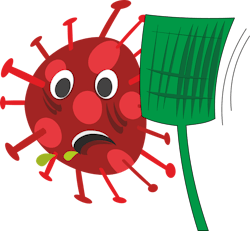Antibody tests reveal complexity of immune response to COVID-19
Leveraging expertise developed from his extensive work with HIV, Jackson Laboratory (JAX) Professor Derya Unutmaz, MD, led an effort to develop two assays. The first one is a highly sensitive and specific antibody test to determine the magnitude of total and different types of antibodies against the virus surface (Spike) and nuclear (nucleocapsid) proteins, while the second determines how well anti-SARS-CoV-2 antibodies neutralize, binding with ACE-2, the human receptor for the virus, according to a news release from the laboratory.
In the latter assay, the team used a non-infectious pseudo-virus with the SARS-CoV-2 spike protein on the external membrane; meaning that the assay does not require a BSL-3-level biosecurity facility yet detects the presence of neutralizing antibodies with extremely high sensitivity and specificity. Unutmaz showed that the assay is able to detect neutralizing antibody levels in patient plasma even at high dilutions, up to a 100 thousand-fold.
The team worked with samples from 115 subjects with confirmed SARS-Cov-2 infection from three different centers (SUNY Downstate Medical Center, UConn School of Medicine and Cedars-Sinai Medical Center) as well as healthy controls (56 subjects from year-old frozen samples to ensure non-infection), Unutmaz and his team were able to determine accurate antibody levels in every patient.
The assay is also sufficiently sensitive to distinguish background levels of antibody in control samples, which may have been from anti-SARS-CoV-2 antibodies in patient plasma. In addition, the antibody assay provides the ability to identify antibody isotopes and assess the ratio of IgA, IgG and IgM present in each sample, the laboratory said.
In the analysis of the patient antibody levels and neutralization, the JAX team had several key findings. First, samples from patients with severe disease – in the ICU or deceased – had almost 100-fold higher neutralizing antibody levels than those with cases mild enough not to require hospitalization. Second, most convalescent plasma samples obtained to treat severe patients had much lower antibody levels, suggesting plasma therapy of hospitalized patients would not benefit them. Indeed, recent findings, including those using synthetic antibodies, strongly support this result. Third, there was big difference – almost a thousand-fold – in the level of neutralizing capacity of antibodies among different subjects.
The results suggest that some individuals with low neutralizing antibodies may be protected for a shorter period of time than others, an important finding given the recent emergence of antibody-evading mutant viruses in South Africa and Brazil. Interestingly, some of the patient plasma was also able to effectively neutralize the original SARS virus, and there was no particular correlation with the levels of neutralization with SARS-Cov-2. This could be due to the fact that these two viruses have similar Spike surface-protein structures and both use ACE2 as a receptor to enter into cells. It remains to be determined whether antibodies that can block both viruses can be more effective in neutralizing SARS-Cov-2.
The Unutmaz lab is continuing to use these assays to follow some subjects six months to a year post-infection, in both adults and children as well as post-vaccination. These studies will be critical for understanding the precise relationship between antibody levels and protection from reinfection, as well as protection acquired through vaccination. They also suggest the use of therapies that target excessive antibodies generated during the severe disease-causing immune pathology.



